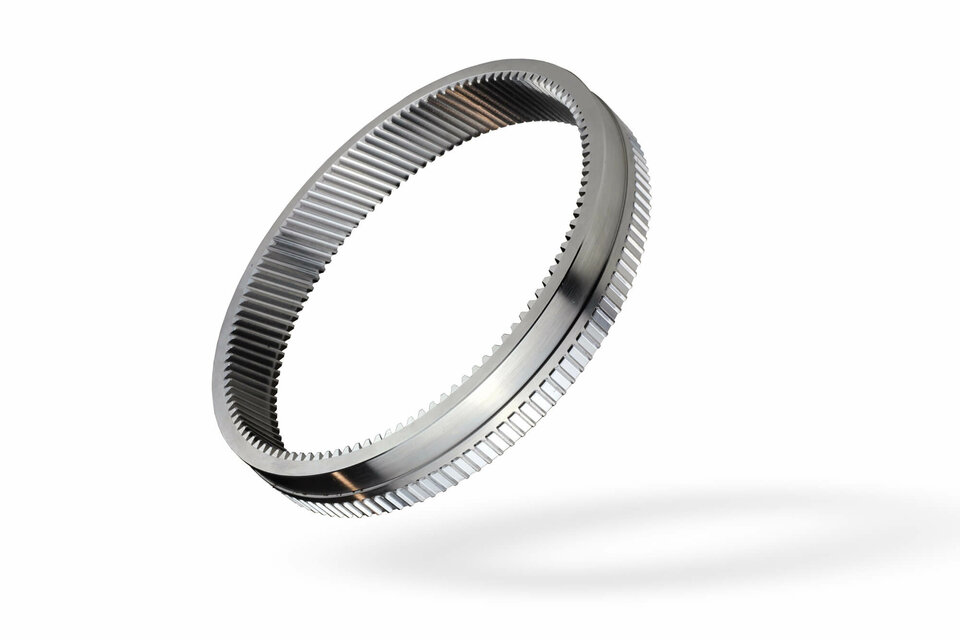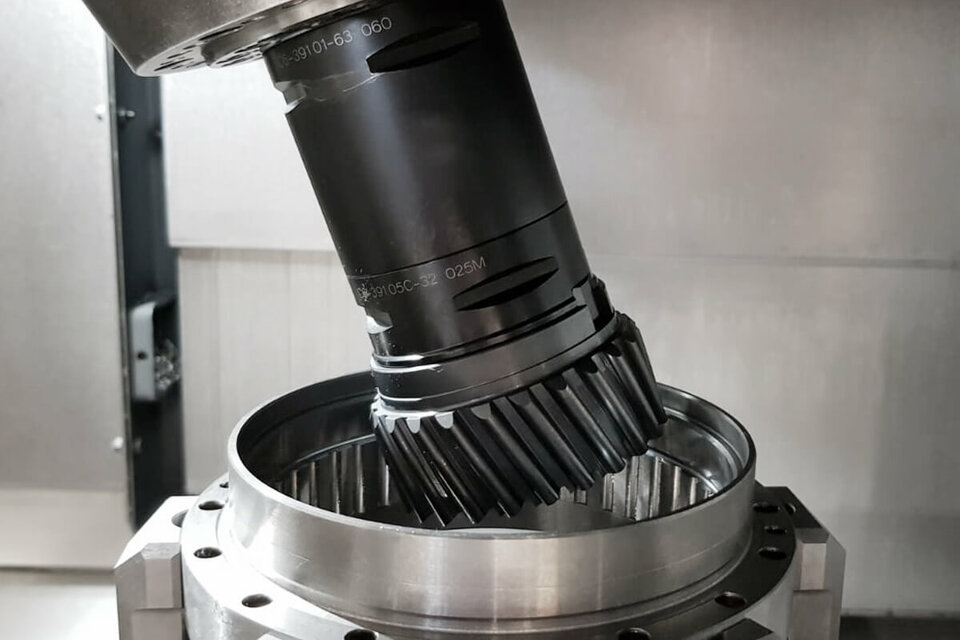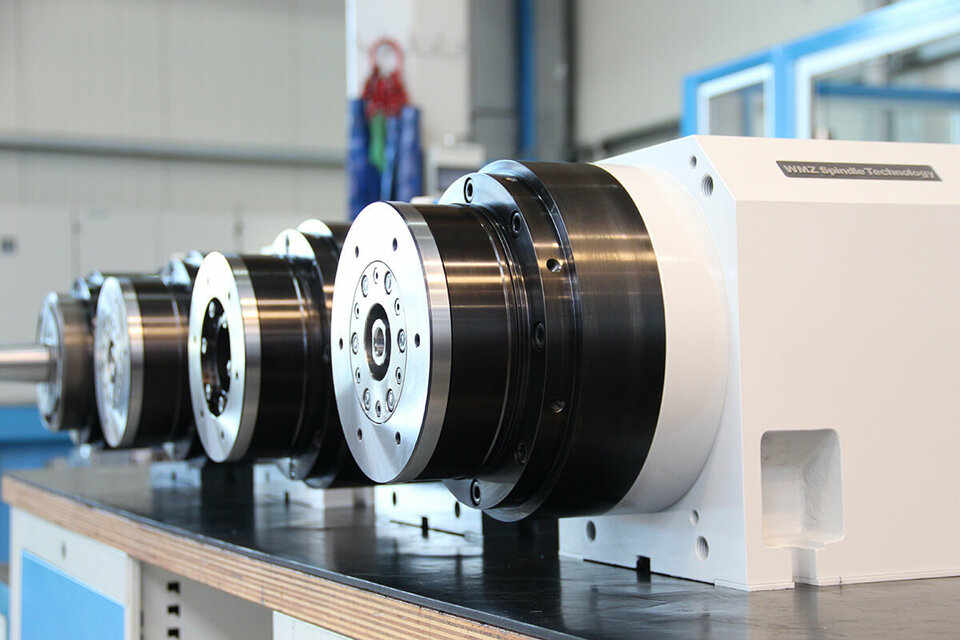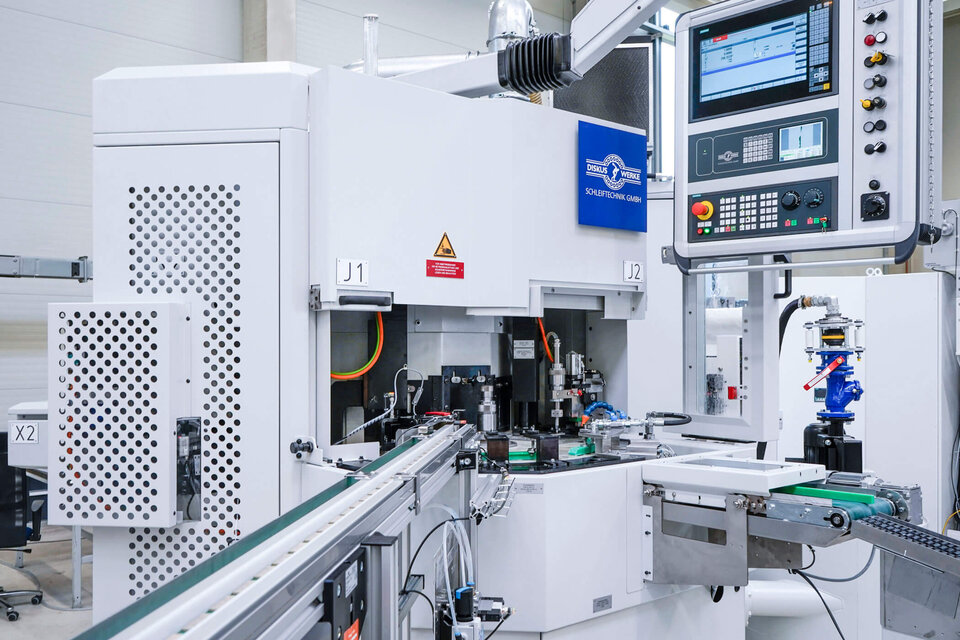In a Tier 1 for the commercial vehicle industry, Pittler was able to complete the machining of hollow gears for planetary gearheads with less effort to achieve higher precision.
From bicycles to commercial vehicles - planetary gears are found in a large number of drive trains. However, their compact design and the possibility of connecting different drives and generators positively and with high efficiency also makes them the ideal torque converter for hybrid and electric vehicles.
The internally and externally toothed ring gear is particularly demanding to manufacture. In addition, the quality standard for this core component has risen sharply in recent years. Today, both the ring gear itself and the planetary gear as a whole should be as compact, light, powerful and precise as possible. The sensitive component must therefore be manufactured with the highest possible precision and maximum economy. Implementing both attributes equally is extremely demanding due to the thin-walled architecture of the component and the large number of machining steps required to produce grooves, oil holes or lubrication pockets on the inner and outer radius.
A leading commercial vehicle manufacturer also recognized this problem and therefore turned to Pittler T&S to make the existing production line significantly leaner and more economical. The aim was to significantly reduce the high number of six different process steps and clamping operations. Successful test machining operations at the plant of the manufacturer of turning and gear-cutting centers in Dietzenbach confirmed the step towards a combined, holistic process design - from soft turning to gear-cutting using Pittler Skiving technology with the SkiveLine machine series.
Fewer individual steps in the process
In process OP 10, the turning and gear-cutting operations as well as the drilling processes were combined on the outside diameter. The gear cutting of the inner diameter using Pittler Skiving technology and the upstream turning operations were combined in the OP 20 process. In this way, the component is already ready for installation after nitriding.
By dividing the complete machining process between two SkiveLine machines including automation unit, the cycle times could be better coordinated and a higher overall productivity could be achieved with only two process steps and clamping. In addition, set-up and loading times could be kept as short as possible despite the very different lengths of the machining times.
Clamping technology as precision driver
The correct design of the clamping tools played a key role in terms of precision. Here, Pittler was able to access the know-how of colleagues from the group's own business field of DVS Spanntechnik. "Already after the first machining tests, our attention was directed to the very thin walls of the component due to the material removal", explains Omar Sharif, product manager for skiving technology at Pittler. "With conventional clamping methods, the component would have deformed too much during machining," he continues. "The magnitude of the resulting concentricity error would have made it almost impossible to achieve the required final quality," concludes Sharif.
The component is now clamped in the first operation OP 10 with an axial mandrel, which is only centred on the inside and clamps the workpiece axially with three fingers with a force of 10,000 N. The deformation caused by the clamping device was reduced to only 10 µm. Similar success was achieved with the second operation. A 6-jaw membrane chuck, also developed by DVS Spanntechnik, picks up the component on its outer diameter, which was previously introduced into the work area from the automation cell in a position-oriented manner.
Overall, the reduction of the innovative clamping tools results in a maximum concentricity error of the internal toothing to the external toothing of only 30 µm.
Less effort + higher quality = highest efficiency
This has resulted in a precise and efficient manufacturing solution that is unique since the invention of the planetary gearhead at the end of the 18th century. For the commercial vehicle manufacturer this means Fewer machines produce a higher quantity of precision-machined hollow gears with better concentricity quality in fewer setups and with fewer personnel.





